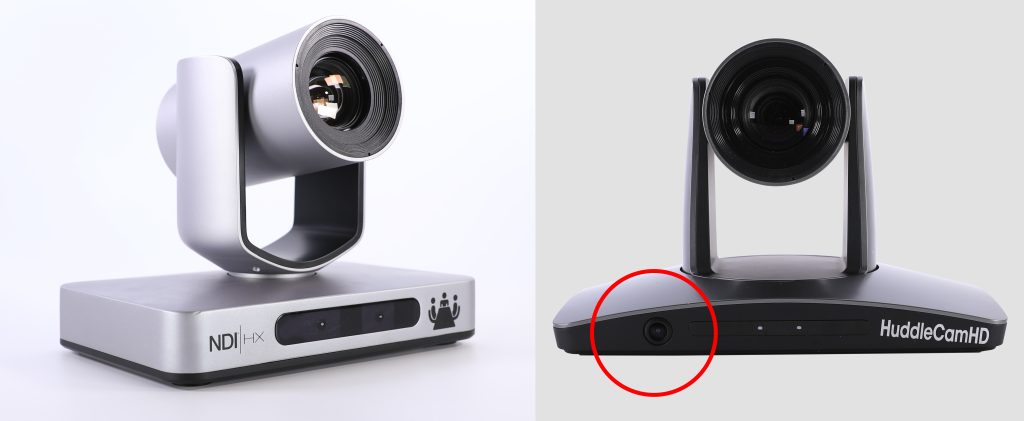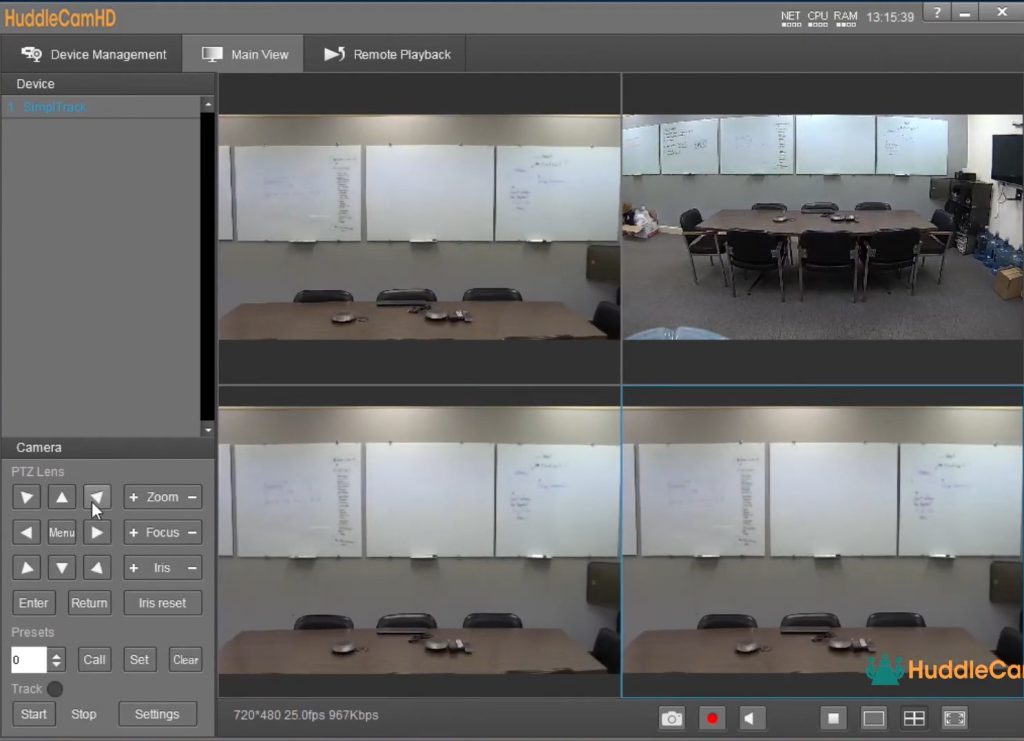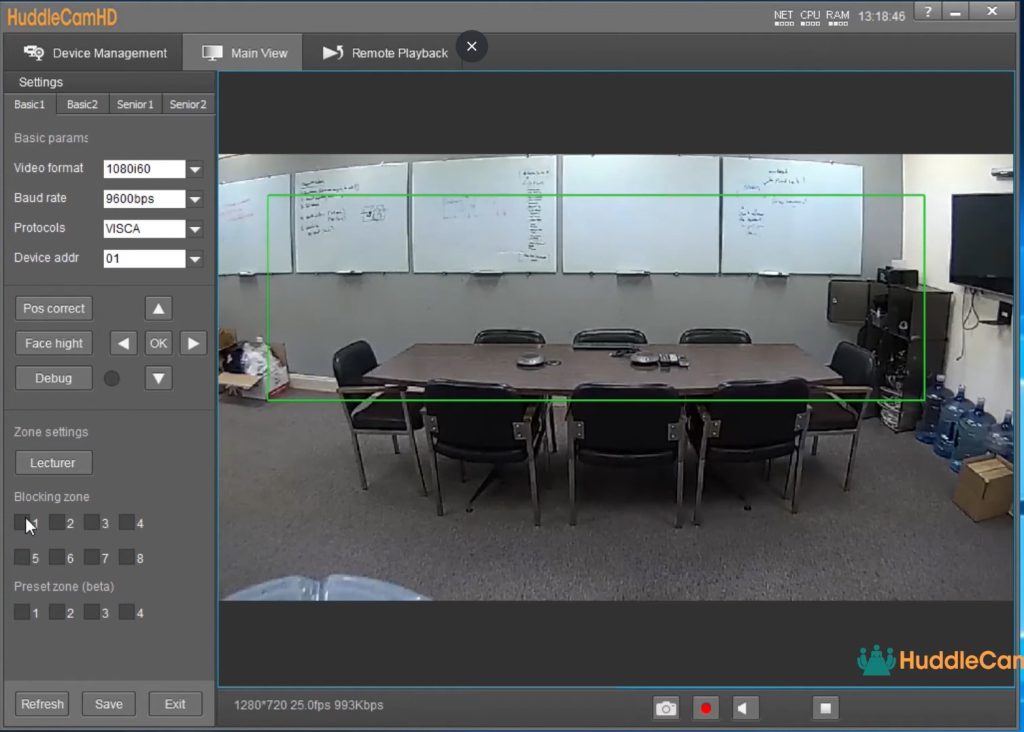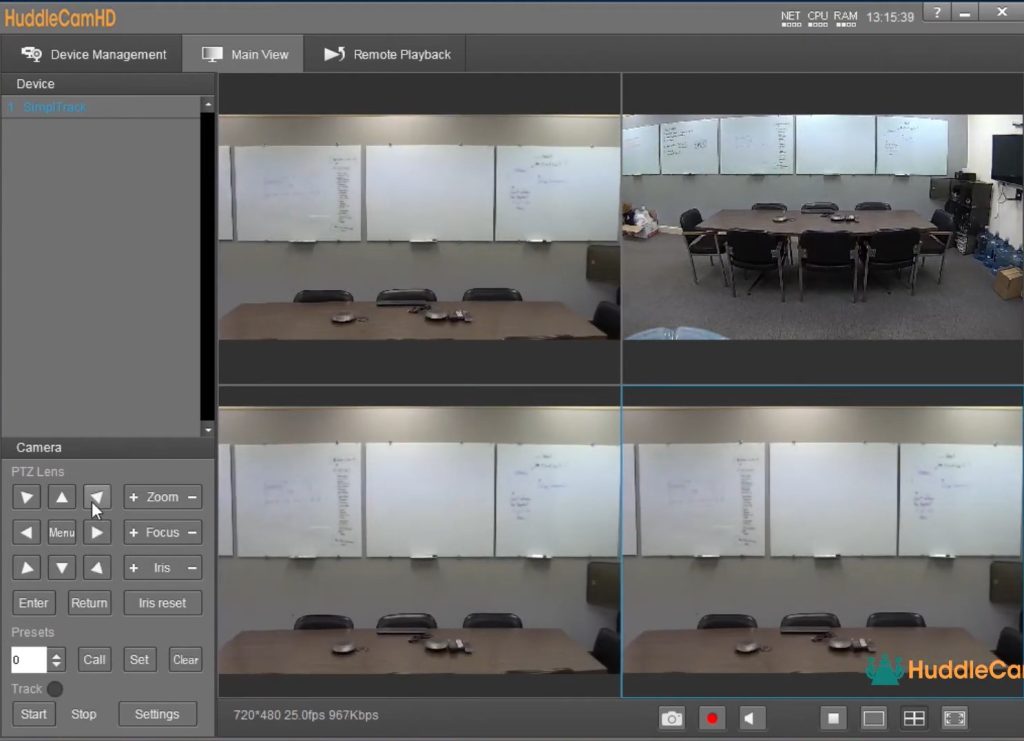Single Sensor vs Dual Sensor Auto-Tracking Cameras
In an era where technology is transforming the way we live and work, the realm of video capture is no exception. Today, HuddleCamHD is offering two different auto-tracking cameras, that can not only record what’s happening but also intelligently follow the action. These auto-tracking cameras have become increasingly popular in many applications, from distance learning to lecture capture, live events, and educational settings. But not all auto-tracking cameras are created equal. The latest evolution in this field is the emergence of dual-sensor systems. These cameras offer a host of new features and capabilities that set them apart from their single-sensor counterparts. But what exactly are these differences, and what do they mean for users? In this blog post, we will explore single-sensor and dual sensor auto-tracking cameras, delving into their unique features, benefits, and ideal use cases.

Pictured above is the single-sensor SimplTrack Lite and the dual-sensor SimplTrack 2.
What is a dual-sensor auto-tracking camera?
You might ask yourself what a dual-sensor auto-tracking camera actually is, given that every camera must have at least one sensor in order to produce video. A dual-sensor camera has two cameras built into one intelligent system. A dual-sensor camera can perform intelligent tasks that automate the process of camera operation in ways that a single-sensor camera cannot. In most cases, one camera sensor is used to provide a wide-angle view of the area which provides intelligence to an optical zoom camera lens which can be steered based on what is happening in the room. Single-sensor cameras can perform auto-tracking capabilities but do not feature the ability to survey the entire room and make adjustments as necessary.

Feature comparison
| Feature | Single Sensor | Dual Sensor |
|---|---|---|
| Smart Tracking | Yes | Yes |
| Group Tracking | Yes | Yes, superior |
| Zone Tracking | No | Yes |
| Selected Tracking | Yes | Yes, superior |
| Smart Blackboard Zones | No | Yes |
| Wide Angle Room View | No | Yes |
| Dynamic Framing | No | Yes |
In the world of auto-tracking cameras, there’s been a lot of discussion about single-sensor versus dual-sensor systems. Both types of cameras have their strengths and offer a range of features that can enhance video capture in various settings. To better understand these two systems, let’s take a closer look at their key features:
Smart Tracking: This feature, present in both single and dual-sensor cameras, allows the camera to lock in on a single subject. Whether you’re recording a solo speaker at a conference or tracking a wildlife subject, this ability to maintain focus on one individual is critical.
Group Tracking: Both camera types also offer group tracking, but the dual-sensor camera has an edge. With its wide-angle lens, the dual-sensor camera is better equipped to frame a group of people, making it ideal for capturing classroom interactions or team sports.

Zone Tracking: This is where the dual-sensor camera really starts to shine. Unlike single-sensor cameras, the dual-sensor system has the ability to handle auto-tracking within specific zones of interest. This means it can focus on a particular area – like a stage at a concert or a designated area in a classroom – offering more flexibility in diverse filming environments.
Selected Tracking: While both camera types can identify all people in frame and select a target to track, the dual sensor camera performs superiorly. Its wide-angle lens provides a better overview of all people in the frame, making it easier to select the right target.
Smart Blackboard Zones: This is a feature unique to dual-sensor cameras, enabling them to properly frame a blackboard writing area. This is particularly useful in an educational setting, where remote students need to clearly see what’s being written on the board.
Wide Angle Room View: Another advantage of the dual sensor camera is its ability to capture a wide-angle view along with the optical zoom view. This provides a broader perspective of the scene, which can be especially valuable in large spaces like lecture halls or auditoriums.

Dynamic Framing: Lastly, the dual-sensor camera offers dynamic framing. When a lecturer interacts with students, for example, the camera can automatically widen its frame to include the interaction. This creates a more engaging and inclusive viewing experience for remote learners.
What are the use cases?
| Use Cases | Single Sensor Strengths | Dual Sensor Strengths |
|---|---|---|
| Education | Effective at tracking a single lecturer | Superior at capturing the lecturer and the whole classroom view. Zone tracking can focus on areas where the lecturer frequently moves to. |
| Conference | Can effectively track the speaker | Can capture both the speaker and the audience, providing a more immersive view for remote attendees. |
| Sports | Can effectively track a single player | Can provide a comprehensive view of the entire field, while also focusing on specific players or a group |
| Live Performances | Can follow a main performer effectively | Can capture the entire stage while also focusing on individual performers, enhancing the viewing experience |
Auto-tracking cameras are revolutionizing the way we capture and experience events, from classroom lectures to live performances. But depending on the situation, a single-sensor or dual-sensor camera might be more effective. Let’s break down some common use cases to see where each camera type excels:
Lecture Capture: When it comes to capturing a single lecturer, single-sensor cameras are quite effective. They can track the lecturer as they move around the room, keeping them in focus. However, dual-sensor cameras offer a superior viewing experience. Not only can they capture the lecturer, but they also provide a comprehensive view of the entire classroom. Their zone tracking feature can focus on areas where the lecturer frequently moves, ensuring that all important visual information is captured.
Conferences: In a conference setting, single-sensor cameras can effectively track the speaker, maintaining focus on them throughout their presentation. But again, dual-sensor cameras offer an enhanced experience. They can capture both the speaker and the audience, providing a more immersive view for remote attendees. This can help recreate the feeling of being in the conference room, even for those who couldn’t attend in person.
Sports: In a sports context, single-sensor cameras can effectively track a single player, keeping them in focus during the game. Dual-sensor cameras, on the other hand, can provide a comprehensive view of the entire field. They can also focus on specific players or groups of players, offering a more dynamic and engaging viewing experience.
Live Performances: For live performances, a single-sensor camera can effectively follow the main performer. But a dual-sensor camera can enhance the viewing experience by capturing the entire stage while also focusing on individual performers. This can provide viewers with a more complete understanding of the performance, including both the main action and the broader context.
In conclusion, while single-sensor cameras offer effective tracking capabilities, dual-sensor cameras provide superior flexibility and performance in a wide range of situations. Whether it’s tracking a specific zone, framing a group of people, or automatically adjusting the frame based on the scene, the dual-sensor camera excels. So, when making your decision between single and dual sensor systems, consider your specific filming needs and the features that will most enhance your viewers’ experience.

